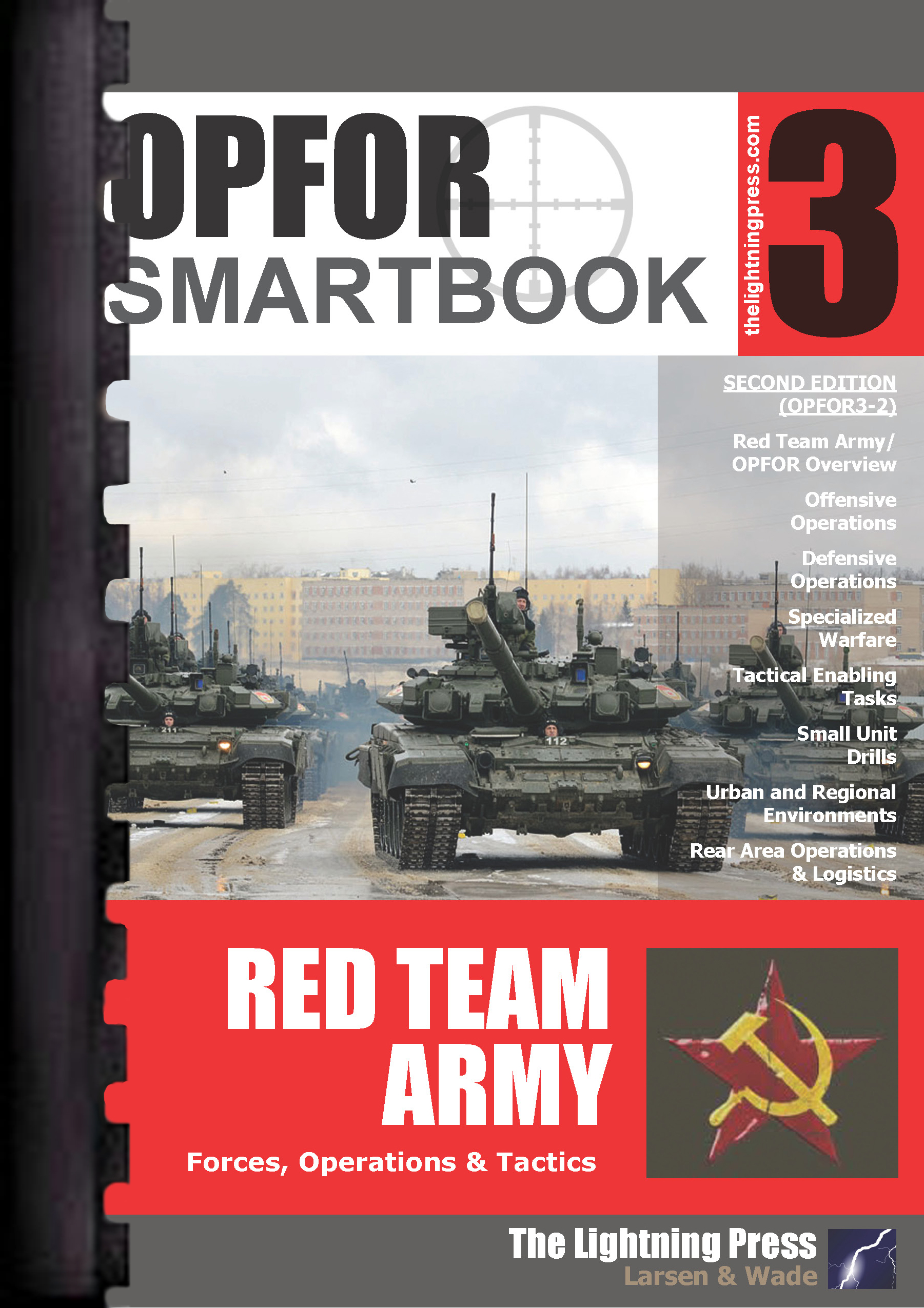Threat, OPFOR, Regional & Cultural
OPFOR SMARTbook 4 - Iran & the Middle East
ISBN-10 :1-935886-92-4
Release Date :Jun 12th, 2023
Norman M. Wade
Binding Type:Perfect Bind
Print Inside Pages:Black and White
Trim Size:5.5'' x 8.5''
Total Pages:290
UPGRADE / CONVERT this book to premium GBC Plastic-Comb binding!

Forces, Conflicts & Threats
OPFOR4 topics and chapters include the strategic environment, U.S. & Iran relations (Iran’s foreign and defence policies, conflicts and tensions, sanctions), Iran’s military (history, doctrine and strategy, core capabilities), force structure, nuclear and missile threat, regional issues and conflicts (Iran’s partners and proxies, instruments of national security strategy), strategic competition (China, Russia, and others), and terrorist threats (VSEOs, Iran’s support for terrorism, etc.)
Spanning more than 4.6 million square miles, the Middle East has for millennia been a geographic and geopolitical crossroads and site of cooperation, competition, and conflict. Rich in cultural heritage but with unevenly distributed natural resources, the region is also beset by internal conflict and instability. More than a third of global container traffic transits the Suez Canal and more than a quarter of global oil transits the Strait of Hormuz. The region is home to almost 50% of the world’s known oil reserves and more than 40% of the world’s national gas.
The greatest single day-to-day threat to regional security and stability remains Iran, which challenges the U.S. and its allies by pursuing regional hegemony, breaching its JCPOA commitments, and posing a conventional threat to partner nations while facilitating and conducting coercive and malign activities.
To achieve its goals, Iran continues to rely on its unconventional warfare elements and asymmetric capabilities—intended to exploit the perceived weaknesses of a superior adversary—to provide deterrence and project power. This combination of lethal conventional capabilities and proxy forces poses a persistent threat. The Islamic Revolutionary Guard Corps Qods Force leads Iranian power projection through a complex network of state and nonstate partners and militant proxies.
Iran will continue to use Syrian (and likely Iraqi) territory as a critical hub and resupply route for maintaining its campaign against Israel. Iran will also remain focused on supporting Lebanese Hezbollah, whose illegal weapons stockpiles exceed those of most legitimate partner militaries in the region. The least restrained and most destabilizing of all of Iran’s affiliates in the region are the Houthis of Yemen. Aside from being active combatants in that country’s seven-year-old civil war, they are also engaged in a near-daily long-range fires conflict with Saudi Arabia.
While Iran poses the most ominous threat to the central region, Violent Extremist Organizations (VEOs) operating in the Middle East, Levant, and Central Asian States also represent a danger to security and stability. The Central Command area of responsibility serves as the epicenter of violent extremism, with 19 of 21 top tier terrorist groups operating across the region. ISIS and Al Qaeda are the principal Sunni violent extremist organizations in the Middle East and Levant. Both groups maintain numerous affiliates pursuing local, regional, and global objectives.

























































